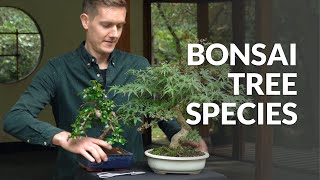Pyracantha Bonsai Care guidelines
The firethorn likes a sunny or semi-shaded position during the growing season. It needs a certain amount of sunlight to produce fruit but should be protected from extreme heat and sun in hotter climates. Pyracanthas are frost-hardy, but when they are planted in containers it is advisable to protect them from strong frost and cold wind. A cold frame is a good place for winter protection.
Always keep the rootball slightly moist. In summer, when the tree produces flowers and fruits, it needs a lot of water and must not dry out. But also take care not to overwater the firethorn. In winter it needs less water. Continue reading about watering Bonsai trees.
Watering
Free lecture from the Beginners CourseApply solid organic fertilizer every four weeks or use a liquid fertilizer every week during the growing season. Use a balanced fertilizer with sufficient phosphorous and potassium to promote flowering and fruit development.
Spring or late summer is a good time to thin out a dense canopy and remove dead parts. New shoots are trimmed back to two leaves during the growth period when they have elongated. Even hard pruning is tolerated and the Pyracantha bonsai will bud willingly from old wood, provided that it is healthy and vigorous. Large leaves can be removed at any time. Most shaping can be done with scissors. Continue reading about pruning Bonsai trees.
Wiring is possible, but beware of the thorns. Older branches of Pyracantha Bonsai are stiff and brittle, but younger twigs are flexible and can be shaped easily. If you want to do a lot of wiring on a firethorn it could be wise to cut off the thorns first. The use of guy wires can sometimes be a better option.
Repot the firethorn tree every two years and older trees every three to five years in early spring. It takes root pruning well and has no special demands concerning the soil. Use a well-draining standard soil mix. The firethorn can grow in slightly acidic, neutral or even alkaline soils. Continue reading about repotting Bonsai trees.
The firethorn tree can be propagated from seed, cuttings or air-layering. Semi-hardwood cuttings can be taken in summer.
The firethorn can be attacked by various pests and diseases. Aphids, scale, spider mites, leaf miners and caterpillars can occur as well as fire blight, which is a bacterial infection, or the fungal infections scab or sooty mold. Use a specific pesticide in case of an infestation. Root rot can occur when the tree is overwatered. For more detailed information on these techniques, check out our Bonsai tree care section.

Firethorn bonsai (Pyracantha)
General information about the Firethorn Bonsai tree
They have smooth or slightly serrated margins. The twigs have strong sharp thorns which can cause badly inflamed wounds. In spring the small white slightly fragrant flowers appear in clusters and yellow, orange or red berries decorate the tree from late summer until winter, if the birds don't steal them. The leaves, fruit and seeds contain hydrogen cyanide and are therefore bitter and slightly poisonous for humans.
The firethorn is often used as an ornamental shrub or for hedges. It is very well suited for bonsai, also for beginners, as it buds willingly from old wood and responds well to pruning and trimming. The Asian species, the narrowleafed firethorn (Pyracantha angustifolia) and the European species, (Pyracantha coccinea) are most often used for bonsai and there are several nice cultivars with different fruit colours. If you need help identifying your tree, take a look at our Bonsai tree identification guide.





